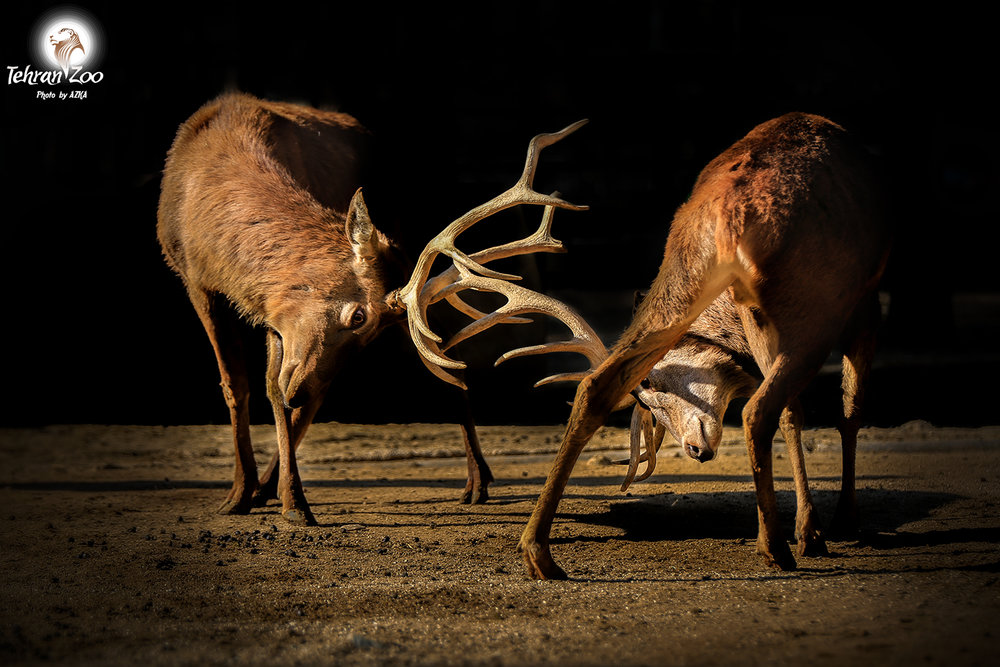Compete by antlers

Caspian Red deer or Maral is a famous subspecies of Red Deer. This subspecies is native in Caspian Sea and Caucasus Mountains. Once found throughout the forested areas of the Alborz and much of the Zagros (the last survivors were seen in the Arasbaran area about 50 years ago) and is now found only in the Caspian Region, particularly to the east in the Dodangeh Wildlife Refuge and Golestan National Park.
Caspian Red deer (Cervus elaphus maral) is burlier than European Red Deer and its two brow tines rather than one considered as the most significant identification key.
Destruction of habitat
Caspian Red Deer (Maral) is consider as easternmost subspecies of red deer. It is, of course famous for its association with belling roars of the stags reverberates through the forested regions. But the situation is not so good for them. Their main habitats are scattered or better say fragmented by human activities. Marals have been seriously affected by logging, which is damaging its vital habitats. Their geographical distribution shrank sharply and now they became scarce in many regions as a result of forest clearance. Their habitat also was taken over by farmers, and the animals were also exposed to uncontrolled hunting.
Adaptation
Caspian Red Deer is well adapted to cope with life in harsh situations. For example, their small ears and short tails, reducing the surface area through which they might lose body heat. The Red Deer is a social animal and primarily nocturnal. It feeds on a variety of leaves and grasses, and occasionally on mushrooms and berries.
Conservation dream
In 2006, World Wide Fund for Nature (WWF) has carried out the surveys in order to assess the feasibility and efficiency of red deer reintroduction in Dilijan National Park and Shikahogh Reserve in Armenia. It is essential to strengthen control over poaching, mining and overgrazing and to enforce conservation activities. This subspecies is protected in Dilijan National Park, Shikahogh Reserve and Arevik National Park of Armenia. But the generation of Red Deer was completely destroyed in the North West and West of Iran according to reports about 50 years and out of reach of humans.
However, genetic mixing as a result of introductions of deer from different areas is a problem that should be addressed. Disease and parasites also have a detrimental effect on the Red Deer populations. Nutritional diseases, natural toxicological factors, viral, bacterial and protozoal diseases, rickettsial infections, neoplastic disease, ectoparasites, endoparasites are some of the major diseases which threaten them.
Red Deer is also plagued by ticks, which can live on their bodies in huge numbers. The blood loss they can cause can lead to death in weak animals. Leopards, wolfs, brown bears and more significantly humans considered as the main threats to them. Pristine forests and undisturbed habitats can guarantee their survival but it seems that there is no way for them to go back to the old ways.
Deer fight
Two Caspian Red Deer can compete for females or territory. Their antlers are shed at the end of the winter and the new antlers reach full growth in the late summer, shortly before the rutting season. When Maral’s antlers are free of their velvet, legendary fights gets started.
Leave a Comment